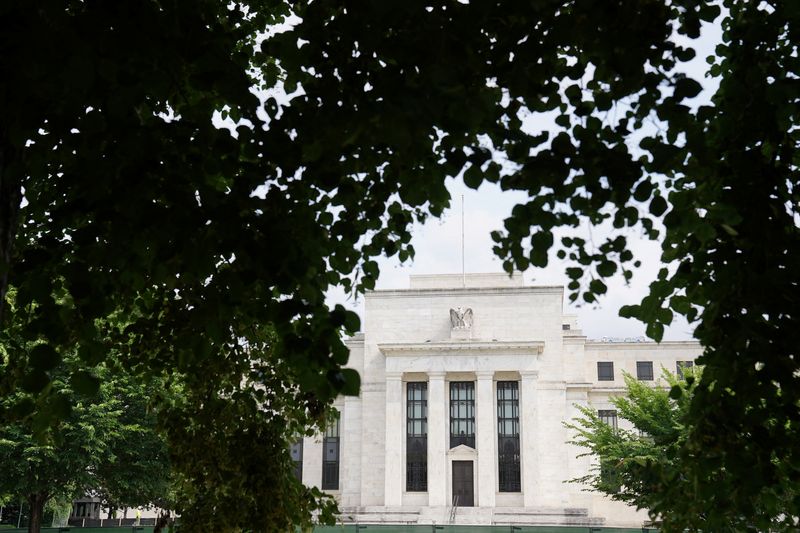TPI Composites files for Chapter 11 bankruptcy, plans delisting from Nasdaq
Investing.com -- Federal Reserve policymakers signaled patience on further rate cuts amid uncertainty about tariff-related risks to inflation and economic growth, according to the minutes of the Federal Reserve’s May. 6-7 meeting released Wednesday.
At the conclusion of its May meeting, the Federal Open Market Committee, or FOMC, kept its benchmark rate in a range of 4.25% to 4.5%.
The decision to keep rates unchanged was fueled by worries among Fed members that tariffs risks slowing economic growth and boosting inflation.
"Members assessed that uncertainty about the economic outlook had increased further and agreed that they were attentive to the risks to both sides of the Committee’s dual mandate while judging that the risks of higher unemployment and higher inflation had risen," the Fed’s minutes showed.
Fed staff projections, however, paint a less somber economic picture after lowering forecasts for real GDP growth in 2025 and 2026 than those prepared for the March meeting. Fed staff also sounded the alarm on inflation, expecting tariffs to "boost inflation markedly this year and to provide a smaller boost in 2026, after that, inflation was projected to decline to 2 percent by 2027," the minutes added.
Recent economic data, including a rebound in consumer confidence following a five-month slump has underscored the underlying strength in the economy despite the surprise dip in Q1.
The U.S. economy contracted by 0.3% in the first quarter of 2025, marking the first decline since early 2022.
But the economy remained in good shape as the dip was driven by a surge in exports "as businesses apparently brought in imports ahead of expected tariff increases," the minutes added.
The discussions at the Fed’s May meeting, however, predated the announcement of a U.S.-China agreement to scale back tariffs—an easing of trade tensions that has led some economists to dial down their recession forecasts.
JPMorgan cut its probability of a U.S. and global recession occurring in 2025 from 60% to 40%.
"The détente between the U.S. and China points to a reduced U.S. tariff tax hike and a smaller slide in global sentiment," JPMorgan said in a recent note. "Consequently, the U.S. economy is expected to skirt a recession, although the drag on second-half growth could still be significant."
